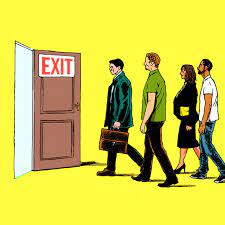The number of Americans voluntarily quitting their jobs rose to a record high in September while job openings stayed stubbornly above pre-pandemic levels, a sign that businesses may have to continue to raise wages in order to attract workers.
To read fearless, unbiased, boldly selected news >>click << here
The Labor Department’s monthly Job Openings and Labor Turnover Survey, or JOLTS report, released on Friday, reflects an uneven economy with strong demand grinding against labor and goods shortages, driving overall inflation to its biggest annual gain in 31 years.
Wage inflation shows few signs of abating even as the daily case rate of coronavirus infections ebbs, with employers in almost every industry competing to lure workers and three million fewer people in the labor force compared to pre-pandemic levels.
The scramble for workers boosted wage growth to an annual increase to 4.9% in October, although this has been outstripped by overall inflation, leading to a fall in real earnings.
For more important information / news in English >>click<< here
A separate survey by the University of Michigan, also on Friday, showed consternation among consumers with the sentiment on the economy falling to a decade low, with few believing policymakers are taking sufficient steps to tackle inflation.
Quits rose by about 164,000 in September, lifting the total to a record high of 4.4 million. The quits rate is seen as a good measure of labor market confidence as workers leave when they are more secure in their ability to find a new job.
There were 56,000 people who quit in the arts, entertainment and recreation industry while 47,000 left in the other services category. State and local government education saw 30,000 departures.
To be a part of ‘Citizen Journalism’ through ‘Local News’ platform >>Click<< here
“The continued surge in quits points to wage growth of between 4.5%-5.0%, well above rates that would be consistent with inflation falling sustainably back towards the Fed’s 2% target,” said Michael Pearce, senior U.S. economist at Capital Economics in New York, following the report.
The Federal Reserve has so far resisted calls to take stronger action to combat higher-than-expected inflation, arguing that it remains transitory even if it persists well into next year. The central bank announced at its last meeting that it will begin to taper its massive bond-buying program this month, seen as a precursor move to raising interest rates from their current level near zero. Investors currently expect a rate liftoff in mid-2022.
